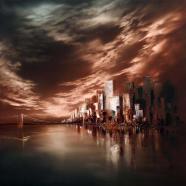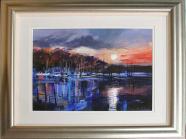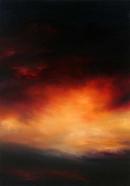As the Sixties swung and Britain subverted the old order, photographer Philip Townsend was there to record all the prime people of the time, beautiful and ugly alike: the debs and their beaux, louche lords and club owners, press barons and business moguls, stars and socialites, artists and creatives, royals and ruffians, and above all the new aristocrats of pop and rock, spearheaded by the Beatles and the Rolling Stones.
Remarkably, Townsend’s entire photographic career exactly spanned that most remarkable of decades, when London was the coolest of capital cities. He took his first serious pictures in 1960 then, in 1970, he put away his cameras for good and casually consigned his pictures to a cupboard. It was only in recent times when he looked at them seriously again, that he found a half-forgotten treasure trove; a time capsule that vividly resurrects those photogenic times. The rescued works are now sought after by magazines and newspapers throughout the world, by galleries such as the National Portrait Gallery, and by collectors worldwide. The reason is simple: Philip Townsend’s pictures are the Sixties.
While other photographers took portraits, often closely cropped, Townsend instinctively widened his frame to include backgrounds, landscapes and the sheer feel of the period. A fine example is his portfolio of the Rolling Stones, including their first ever picture sessions, when they were broke and hungry, without a recording contract, a band not yet on the run. Townsend bought them barbecued chickens and set about fostering the semi-delinquent image which they still cultivate today. It has been said that while the Beatles, whom Townsend also photographed in their first flush of fame, were bad boys turned good through the influence of their late manager Brian Epstein, the Stones were goodies who became stage baddies.
Their first manager, Andrew Loog Oldham, whom Philip had met as a young chancer on the waterfront in Monte Carlo, was grooming an unknown group for stardom and needed an image-maker to make the dream happen. The group was the Rolling Stones, and his brief was to make them look “cruel, tough and streetwise”. Townsend’s innovative pictures have never been bettered.
He moved effortlessly into the nascent world of rock, photographing the Beatles many times, as well as other pop icons of the Sixties such as Gene Pitney, Johnny Ray, the Searchers, Jimmy Page of Led Zeppelin and Peter and Gordon (whom he briefly managed), Twiggy, Charlotte Rampling and Princess Alexandra dancing with Marlon Brando. But there was also a serious side to his work. For instance he photographed the aftermath of the 1966 Aberfan mining disaster with great sensitivity.
At the end of the decade he abruptly abandoned his cameras and his career in photography. “I suppose the magic of the 1960s was beginning to fade anyway,” he says now, trying to rationalise his decision, “but if there was a turning point it was when I was standing with a load of snappers in Whitehall, trying to get a picture of Cabinet Minister Patrick Gordon Walker, who was about to resign. One old boy turned to me with a wink and said, “He’ll be coming out the back of the building, not the front. Trust me, I’ve been doing this for 45 years”. I thought, I don’t want to be doing this in 45 years. So I just stopped.”
Unlike most of his contemporaries from those casual times, Townsend was shrewd enough to keep his copyright. His unique collection is one of the few to remain in the hands of its creator. He once said that “photographing people is like shooting ducks”. Few photographers have aimed better – or bagged better trophies.

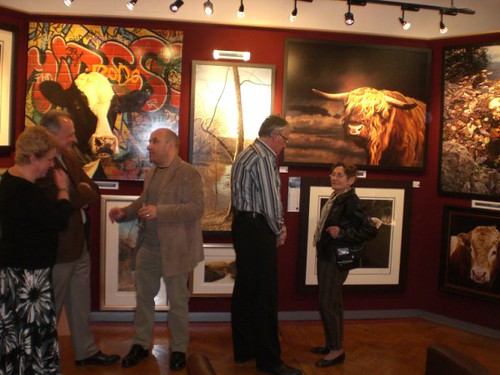
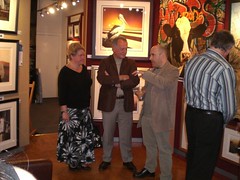
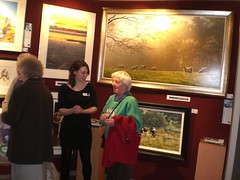



 Tim was born in Northumberland in 1958, educated at Sedbergh and later graduated from Wimbledon School of Art with an honours degree in Theatre Design. Initially employed by a theatre company designing sets and arranging special effects, and later working in a variety of galleries, Tim’s early career offered ample opportunity for him to indulge his two main interests – painting, and the observation of human behaviour!
Tim was born in Northumberland in 1958, educated at Sedbergh and later graduated from Wimbledon School of Art with an honours degree in Theatre Design. Initially employed by a theatre company designing sets and arranging special effects, and later working in a variety of galleries, Tim’s early career offered ample opportunity for him to indulge his two main interests – painting, and the observation of human behaviour! When he was just 11 years old, a young Arron Bird picked up a can of spray paint for the very first time and created his first painting ‘Street Level’. Now, 24 years later, Arron is more famously known by his tag, Temper, and has achieved phenomenal success as a graffiti artist.
When he was just 11 years old, a young Arron Bird picked up a can of spray paint for the very first time and created his first painting ‘Street Level’. Now, 24 years later, Arron is more famously known by his tag, Temper, and has achieved phenomenal success as a graffiti artist. Simon Kenevan was born in London in 1963, but while he was still a child he moved to the south coast of England. He has fond memories of these idyllic early days, describing himself as free-spirited, running barefoot in the sand and climbing trees. At a young age when his family separated, Simon learnt to be self sufficient and self contained. This independence has remained with him ever since, and has been in part responsible for the poignant and reflective qualities in his paintings.
Simon Kenevan was born in London in 1963, but while he was still a child he moved to the south coast of England. He has fond memories of these idyllic early days, describing himself as free-spirited, running barefoot in the sand and climbing trees. At a young age when his family separated, Simon learnt to be self sufficient and self contained. This independence has remained with him ever since, and has been in part responsible for the poignant and reflective qualities in his paintings. The second of four children, Simons flair for art was first noticed when he won his first art competition at the age of six. Other childhood art prizes were to follow, including several in his teenage years and a national art students painting prize while he was at college.
The second of four children, Simons flair for art was first noticed when he won his first art competition at the age of six. Other childhood art prizes were to follow, including several in his teenage years and a national art students painting prize while he was at college. Over the course of her impressive career Sherree has become one of the UK’s most collectable contemporary artists; with a discerning international following of art lovers, she enjoys an unrivalled reputation in the international arena. Her impressionistic approach lends a unique charm to each stunning, figurative composition, her subtle hand blending each detail into a creation of captivating elegance.
Over the course of her impressive career Sherree has become one of the UK’s most collectable contemporary artists; with a discerning international following of art lovers, she enjoys an unrivalled reputation in the international arena. Her impressionistic approach lends a unique charm to each stunning, figurative composition, her subtle hand blending each detail into a creation of captivating elegance. Fine Art Trade Guild Award Winner: ‘Best New Artist 2008′. Rebecca’s distinctive oils on canvas are beautifully depicted portrayals of life on the land and the sea. The large ensemble cast of figures, boats and sea birds creates an impression of ceaseless activity, and this is heightened by the natural curves of the classic English harbour which provide movement and energy. Her palette is based strongly on the colours of the sea, with blues, greens and greys dominating the entire canvas.
Fine Art Trade Guild Award Winner: ‘Best New Artist 2008′. Rebecca’s distinctive oils on canvas are beautifully depicted portrayals of life on the land and the sea. The large ensemble cast of figures, boats and sea birds creates an impression of ceaseless activity, and this is heightened by the natural curves of the classic English harbour which provide movement and energy. Her palette is based strongly on the colours of the sea, with blues, greens and greys dominating the entire canvas. Contemporary images of Paul James’s traditional animal paintings on a backdrop of modern day graffiti are sure to hit the mark with many art collectors. The collection includes quirky images of much loved animals including a swan, a duck and cows set on these spellbinding backgrounds. The originals for a number of this latest collection will be on display during Paul’s gallery appearances in all breeze art gallery locations throughout Scotland, 23-25th April. Signed limited edition will also be available.
Contemporary images of Paul James’s traditional animal paintings on a backdrop of modern day graffiti are sure to hit the mark with many art collectors. The collection includes quirky images of much loved animals including a swan, a duck and cows set on these spellbinding backgrounds. The originals for a number of this latest collection will be on display during Paul’s gallery appearances in all breeze art gallery locations throughout Scotland, 23-25th April. Signed limited edition will also be available.






